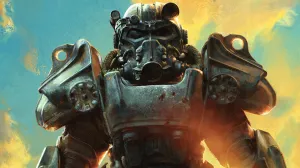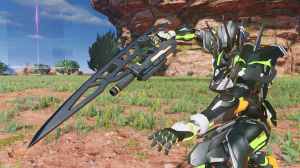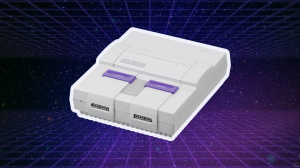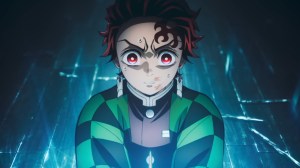For the last few years, independent comic creator Michel Fiffe has been making a name for himself with a love letter to the heyday of superhero comics, paying homage to the bombastic style of ’90s classics like Suicide Squad and X-Force with his self-produced and self-distributed title COPRA.
Videos by ComicBook.com
But don’t be confused, Fiffe has his own approach to these classic ideas that makes him unique — a standout in a crowded field of cartoonists attempting to recapture the glory days. But instead of trying to trap that lightning in a bottle, Fiffe is conjuring up his own thunder clouds.
After filling in the gaps on Rob Liefeld’s cult-classic Bloodstrike series for Image Comics, Fiffe has since joined the rank and file of IDW‘s license of the GI Joe franchise with a brand new series exploring the region of Sierra Muerte.
ComicBook.com spoke with with Fiffe about GI Joe: Sierra Muerte before the first issue hits stores next week.
ComicBook.com: You’re basically a comics historian. Based on the comics that you’ve already done, GI Joe, it’s right in your wheelhouse. So, how did this book come together? Did an editor at IDW come to you? Did you pitch it? How did this whole idea for this series come together, and how did you get involved?
Michel Fiffe: It’s been in the works for a while, actually. It just happened to be the right time for both of us. I had a good window to work on something other than my usual COPRA title. And so it was just a matter of what the story was, and who I was gonna use. Because I’m writing and drawing and coloring everything, all that stuff needed to be carefully considered on my end and hopefully get Hasbro’s approval.
So, that whole process took a while. But luckily it happened pretty organically, I would say. Everyone I’ve worked with at IDW has been great and super receptive to my approach to these characters. So, it was just a natural fit, you know? I think GI Joe is just the perfect vehicle for me to do my thing on. I’m just glad it exists. I’m glad it happened.
Like you said, you read all these whole comics and stuff. This seems like something that fielded you in your childhood. I can tell the affinity that you have for all these characters, and how you’re using pretty much every one you can get your hands on. We’re gonna see Destro next issue. We get all the main heavy hitters in this one. So, what was it that spoke to you about this comic of doing this project? Why was this important to you?
Fiffe: A couple things. Okay. I should back up a little bit. It’s just a lot to wrangle, you know? And articulate. As a kid I had a couple of comic books and a couple toys, but I was mostly familiar with the cartoon. As a collector later on, as a reader, as an adult reader, I rediscovered the work of Larry Hama. That includes GI Joe. I took a deep dive on all his work, especially the GI Joe material. That inspired my own work; just in general. It was just a great inspiration. Great comics. It was great entertainment. I still appreciated it.
That doesn’t always work. Once you revisit old stuff, whether it be nostalgic or not, sometimes it doesn’t hold up. Larry Hama’s work did. So, using that inspiration, I started thinking about what stories I would like to tell with these characters; because I fell in love with the characters because of Larry Hama and all the artists that he worked with, right? That’s how the story came about, right? I just wanted to tell my greatest hits of these characters. Put them in the exact perfect locations that I would want to see them it, you know? So, I cherry picked a roster, and I developed a story around their personal dynamics, like how I would like to see them interact, so to speak.
So, it came from both. It came from inspiration from the old comics, but also just a natural affinity for this type of material. Yeah; there’s just so much to get. I only had three issues to do it in. I treated it like it was the only GI Joe comic book I would ever do. So this was my shot to just do everything. So, that’s pretty much how I approached this whole thing.
Interesting. It’s cool, because this one feels like it stands alone. You don’t have to be familiar with GI Joe. It doesn’t fit into one of the continuities. That’s very different from your last book, which was very continuity heavy. You got to play around a lot, but you still worked in the confines in Bloodstrike. So how was that approach different? How do you approach these different stories and still maintain the heart of the characters?
Fiffe: I just depends on the characters themselves. The properties, their history, and my personal feelings towards them. Have a personal stake in this stuff. So, when it came to Bloodstrike, yeah. That was specifically to tie up loose ends and to plug in old continuity. That was specific to those characters and their publishing trajectory, right?
So with GI Joe, that’s a totally different animal. I wanted to make reader friendly, jumping on point that anyone could enjoy. Yet, old school die hard fans would still get a kick out of. They wouldn’t feel like they’re just reading some 101 adventure, you know? I really try to balance both, where everyone’s gonna love it. You could introduce it to a friend who somehow has never read GI Joe, or someone who’s been reading from the very beginning. I think they’re both gonna love the book.
I do think that was the challenge. It’s up to the readers to let me know if I succeeded or not, but I poured my heart into it. That much I can tell you.
What was it like working with Hasbro? Because it’s such a big brand with movies and action figures. You’re mostly doing comics about people who are shooting each other in the face. What was the process of working with Hasbro in getting this comic out in stores?
Fiffe: I really wanted to have people shoot each other in the face on this one. No spoilers. They were really cool and pretty hands off. I really just worked with IDW. But, it did take getting used to, only because the approval process is so different from just comics in general. Not only in self publishing, but in just your typical publisher. But, they were receptive to everything I did, you know? I never had to change anything too drastically, you know? They were on board for everything from the beginning.
Now, I wanna talk about the process of making this comic, because it’s very classical in your style. It’s very much in your aesthetic. But, you also seem to take an old school approach to the layouts, and even just the coloring. How did you change this up to make it aesthetically different from your previous works?
Fiffe: Well, I wouldn’t wanna repeat myself, but, you know, I wanted to have a sharp, clean look to this. Something that hearkens back to the cartoon, which was my introduction to the characters, right? So, I wanted to uphold that aesthetic look. That was different for me. That was a stretch for me, because usually my stuff is a little bit more hand draw, a little bit raw in the inking. The layouts, I just wanted it to be as clear as possible. I didn’t really want to throw anything off by being too experimental. But, I do try different things within the scope of the GI Joe mini. I just wanted it to be as concise a story as possible. Visually, and story wise.
Really, it’s just me trying new things. You know, in service of these characters. I think it has to match, again, the characters and the world that they inhabit. For my COPRA stuff, because it’s a long running serial, I could just try all sorts of different stuff. It’s ever changing. For this, I had three issues to really focus on a specific voice for the story, and visual queue for the look.
It seems like you had a ton of fun lettering this comic. Anytime someone would kick down a door or throw someone through a window, you feel it, and you hear it coming out. It’s a really cool style that you applied for that.
Fiffe: Awesome, thanks. Yeah, that’s me hand lettering. I try to make it as part of the art as anything else. That’s the advantage I have to inking my own stuff and doing hand lettering as well. It’s just the extra little human touch that I respond to in comics in general. But, that’s just the way I work. So, anytime I try to take advantage of that, I will.
Other than your Image stuff, but in short stories for Marvel and Valiant stuff. This seems like one of the longest projects that you’ve worked with an editor on. David [Hedgecock] and Megan [Brown], is that right?
Fiffe: Mm-hmm (affirmative). Yeah. At least, stuff that I’ve written and draw. Because, I’ve had editors write over at Marvel for longer projects, but for something that is pretty much entirely just me, I was working with David the whole time on this project. It was great. It was a nice shift. Usually, for COPRA, it’s usually just me and my proofreader, and whatever friend I could swindle into reading my stuff. But, with David, it was great. It was a great working relationship, you know?
How did he improve the book? What did he bring to the table?
Fiffe: Well, he helped me to clarify ideas and strengthen them. Because, at first, when I was trying to formulate the story, there was so much I was throwing at the wall. I just had to focus. He helped me do that, you know? He would give me feedback every time. Pages would come in. Whether it be a cover or layout or anything, or even just dialogue, he would just tweak it or suggest certain things. We would talk about that. That dynamic is something that I don’t usually have or work with. So, it was refreshing, and it was positive, you know? It was certainly different.
As a writer and an artist, you’re involved at all phases of the comic. A lot of comics nowadays, they have many people working on them. So, you have this singular vision. How much does that change over the page? Do you script a story like this first, and then go through your scripts? Are your scripts very loose? Or, do you just go at it? You have a plot written out and you just use that as a skeleton to go crazy and do this comic as it comes to you? What’s your style for how you complete these pages and put it all together?
Fiffe: I pretty much work from the bottom up, but just all myself. It doesn’t really have to go through any process to get reviewed by anyone. I’d really just plot it first, and then I’d write either a more detailed plot or dialogue, and then I go through a second draft. And then, as I’m lettering it. You know, as I do layouts. Then, as I’m lettering it, that goes through another draft. So, it’s always being reworked and re-tweaked. Even when it’s finalized, and everything’s ready to go, I still change things.
So, I’m constantly editing. I’m not trying to do too much. I don’t wanna change it so much where it loses it’s initial impact, you know? I wanna keep the immediacy of working in this style. But, I’m always refining it. I just don’t over refine it, where it loses all it’s qualities, you know? So, that’s how I worked on the GI Joe thing. The only thing is that I had Dave checking in on me, making sure that I wasn’t going too nuts. That’s usually how I work. That’s largely how I work.
Sometimes it could be art first and then dialogue, depending on the scene. Especially if I have to orchestrate a huge fight scene or something. That’s all visual, so I have to nail down the visual dynamics first. But by and large, it’s just the typical process, but just, it’s on me.
What can fans expect from you next? I’m guessing you have some more COPRA in the pipeline, as always. What issue?
Fiffe: The next one. The next issue. I left it at issue 31. I left it on a cliffhanger, so I gotta wrap that up immediately.
Was that the big Castillo cliffhanger?
Fiffe: Yes, yes. I’ve been waiting. The thing is, I thought I would be jumping back onto COPRA pretty immediately, but then Bloodstrike happened. And then, GI Joe happened. So, those are dream gigs that I would be dumb to refuse. Like I said, I felt like those are my only shots to work on those characters, so I took both of them. But, I’ve been thinking about this COPRA story for well over a year, and I can’t wait to get back to it. I’m in it right now. I just can’t wait for the issues to start coming out. That’s what I have coming up next.
GI Joe: Sierra Muerte #1 hits comic shops and digital storefronts on February 6th.








